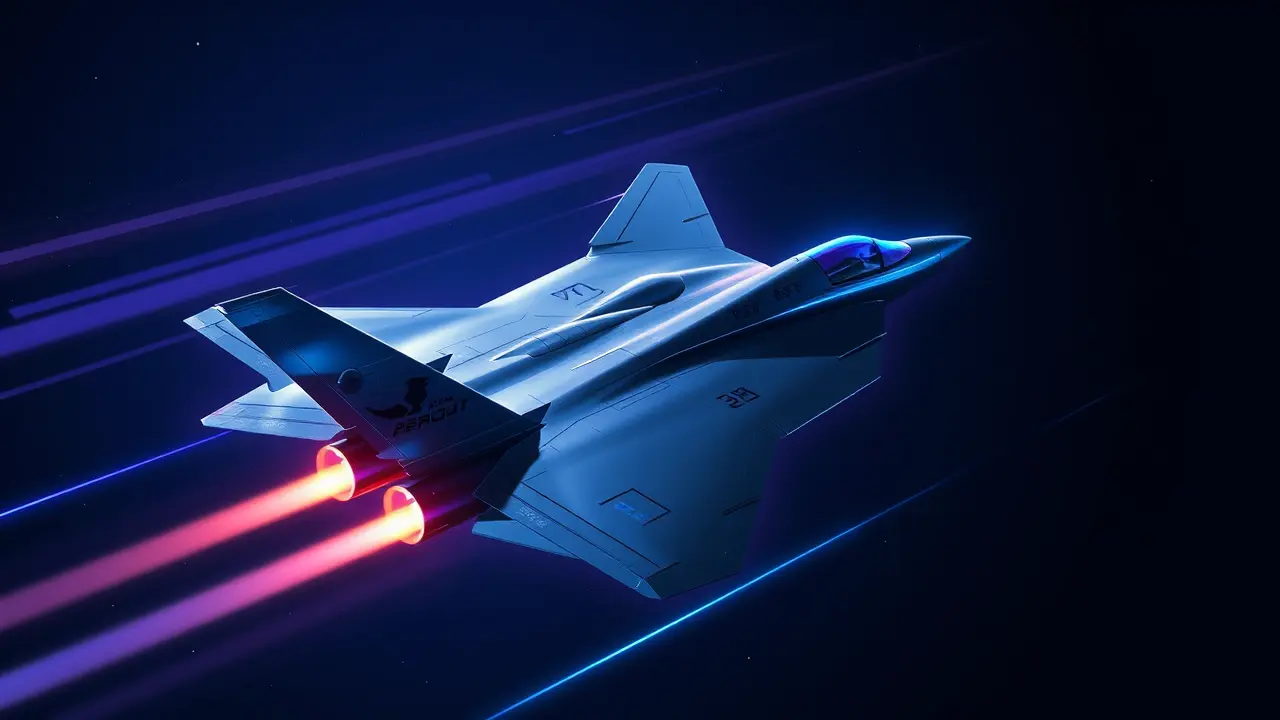
Politicsconflict & defenseMilitary Operations
China's Sixth-Gen Fighter Advances Rapidly in Air Supremacy Race.
TH
Thomas Green
17 hours ago7 min read
The race for the skies of tomorrow has just accelerated dramatically, with China's parallel sixth-generation fighter programs demonstrating a development velocity that is nothing short of astronomical. In a move that has sent ripples through global defense and intelligence circles, updated prototypes from these clandestine initiatives have been spotted conducting test flights a mere ten months after their initial, shadowy public debut.This blistering pace is not merely an engineering feat; it is a strategic gambit in the high-stakes cosmic chess match for air supremacy, a direct challenge to the United States' long-held dominance. The images, which erupted across Chinese social media platforms, offer a tantalizing glimpse into a future of aerial combat that feels ripped from science fiction.The aircraft, unofficially linked to the Chengdu Aircraft Corporation, presents a radical departure from current fifth-generation designs like the F-22 Raptor and China's own J-20. Its most striking feature is a tailless, blended-wing body, a design philosophy that prioritizes extreme stealth and aerodynamic efficiency, potentially granting it a significantly reduced radar cross-section and enhanced maneuverability.Even more intriguing is the suggestion of a three-engine configuration, a design choice that hints at an insatiable demand for power, possibly to fuel next-generation systems like directed energy weapons or the complex electronics warfare suites required to dominate the electromagnetic spectrum. To understand the magnitude of this leap, one must look to the stars and the lessons of the Space Race.The breakneck speed of China's progress echoes the frantic, politically charged era of the 1960s, where every launch and every new design was a proxy for geopolitical might. Today's battlefield, however, is not just about who can fly higher or faster, but who can command the entire information domain.A sixth-generation fighter is conceptualized not as a solitary platform but as the central node in a vast, interconnected 'combat cloud,' seamlessly sharing data with satellites, naval assets, ground forces, and swarms of loyal wingman drones. This networked existence would allow the fighter to fire missiles over the horizon, guided by a drone it has never seen, or to paralyze an enemy's air defenses using electronic attacks coordinated from a command center a thousand miles away.The implications of China closing this technological gap—or potentially forging ahead—are profound. It would fundamentally alter the balance of power in the Indo-Pacific, challenging the ability of the U.S. and its allies to project force in regions like the South China Sea.An air force equipped with such systems could establish air superiority not through dogfights, but by rendering opposing aircraft electronically blind and deaf long before visual range is ever achieved. Experts are divided on the trajectory; some caution that rapid prototyping, while impressive, does not equate to a fully operational, logistically supported fleet, pointing to the immense challenges of manufacturing the advanced materials and computing systems at scale.Others, however, see this as a Sputnik moment, a clear signal that the technological overmatch the U. S.has relied upon for decades is eroding. The parallel development programs themselves suggest a robust, well-funded strategy, allowing China to explore multiple design philosophies simultaneously, hedging their bets in a way that a more bureaucratic and publicly scrutinized procurement process like the Pentagon's Next Generation Air Dominance (NGAD) program may struggle to match. As these sleek, tailless shadows streak across the test ranges of China, they carry with them the weight of a shifting world order, a silent testament to a new era of great power competition where the frontier of supremacy is not just land, sea, or space, but the very air we once thought we had mastered.
#featured
#China
#sixth-generation fighter
#air supremacy
#military technology
#test flight
#US competition
Stay Informed. Act Smarter.
Get weekly highlights, major headlines, and expert insights — then put your knowledge to work in our live prediction markets.
© 2025 Outpoll Service LTD. All rights reserved.